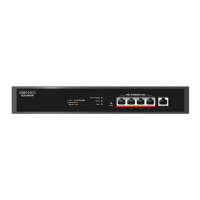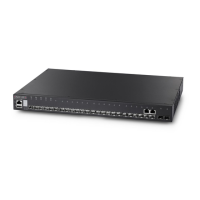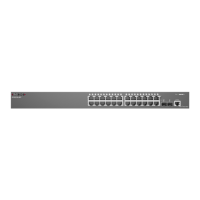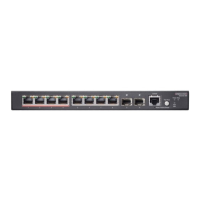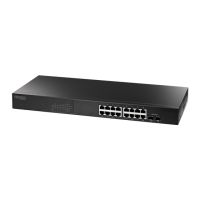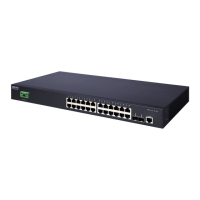C
HAPTER
10
| Class of Service
Layer 3/4 Priority Settings
– 246 –
N
OTE
:
The default settings used for mapping priority values from ingress
traffic to internal DSCP values are used to determine the hardware queues
used for egress traffic, not to replace the priority values. These defaults are
designed to optimize priority services for the majority of network
applications. It should not be necessary to modify any of the default
settings, unless a queuing problem occurs with a particular application.
SETTING PRIORITY
PROCESSING TO
DSCP OR COS
The switch allows a choice between using DSCP or CoS priority processing
methods. Use the Priority > Trust Mode page to select the required
processing method.
CLI REFERENCES
◆ "qos map trust-mode" on page 866
COMMAND USAGE
◆ If the QoS mapping mode is set to DSCP, and the ingress packet type is
IPv4, then priority processing will be based on the DSCP value in the
ingress packet.
◆ If the QoS mapping mode is set to DSCP, and a non-IP packet is
received, the packet’s CoS and CFI (Canonical Format Indicator) values
are used for priority processing if the packet is tagged. For an untagged
packet, the default port priority (see page 239) is used for priority
processing.
◆ If the QoS mapping mode is set to CoS, and the ingress packet type is
IPv4, then priority processing will be based on the CoS and CFI values
in the ingress packet.
For an untagged packet, the default port priority (see page 239) is used
for priority processing.
PARAMETERS
These parameters are displayed:
◆ Interface – Specifies a port or trunk.
◆ Trust Mode
■
CoS – Maps layer 3/4 priorities using Class of Service values.
■
DSCP – Maps layer 3/4 priorities using Differentiated Services Code
Point values. (This is the default setting.)
WEB INTERFACE
To configure the trust mode:
1. Click Traffic, Priority, Trust Mode.
2. Select the interface type to display (Port or Trunk).
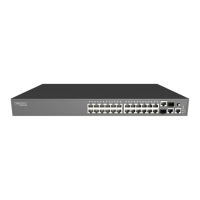
